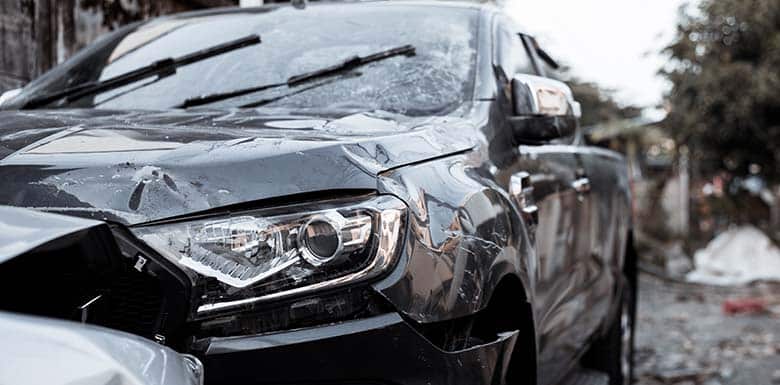March 10, 2023
How is Fault & Liability Determined in Illinois Car Accidents?
Posted in: Car Accidents

Car crashes can be traumatizing, especially if you know who can cover your damages. You will likely have medical bills after your wreck and may have lost wages as you recover. Understanding liability and fault can improve your odds of recovering money for your damages from the right parties.
What Is Fault or Liability in Car Accidents?
Fault and liability are two different things in personal injury law. Fault describes which party is to blame for negligence or reckless behavior by breaking Illinois car accident laws.
Financial or legal liability explains who will pay for the damages caused by the Illinois car crash. In most cases, the at-fault driver’s car insurance company will be financially liable for your damages.
Fault and Negligence in Illinois
The party who is at fault in a car crash is the one who caused the accident. In most cases, that will be another driver. However, it could also be an auto manufacturer, maintenance person, or another party. The at-fault party is typically negligent.
Negligence is a legal theory indicating that the at-fault party owed the other party a legal duty, breached that duty, caused the accident, and caused the damages. A variety of evidence can be used to show these elements of negligence.
Some car accidents have undeniable signs of fault, while others can be more complicated. Working with a car crash lawyer who is familiar with collecting the necessary evidence to prove fault in your case is essential.
What Is Comparative Negligence?
Illinois uses modified comparative negligence when determining how much fault a person has in a car crash and how much they can recover. In a car accident, this legal theory considers who followed the Illinois Rules of the Road and who contributed to any negligence that caused the crash.
Contributory negligence states the amount of compensation you can recover will be reduced by the percentage of fault you share in the accident. For example, if you were found to be 20% at fault and you were awarded $100,000 in damages, you can expect a payout of $80,000.
This does not directly apply to settlements, where parties do not usually use comparative negligence and instead just settle on a payout amount without fault applied.
Additionally, anyone with more than 50% liability cannot collect damages from the other party.
What Kind of Evidence Can Prove Liability in an Illinois Car Crash?
There is an array of other evidence that your Illinois car crash attorney can help you gather to support your case. You will need this information to prove fault, negligence, and liability.
Some of the most helpful evidence can include:
- Pictures and videos from the scene – Take photos of the vehicle damage, injuries, roadway signs, street markings, and other relevant information supporting your claim.
- Police report – Call 911 and get an official accident or crash report. The police officer will draw a diagram of what happened and may issue a citation to the at-fault party.
- Witness statements – Get the contact information of anyone who observed your crash. You may even record them describing what they saw during the wreck.
- Crash reconstruction diagrams – Your attorney may hire an accident reconstructionist to determine precisely what happened in your crash. This will help prove fault.
- Insurance company documents – You must know policy limitations and details to collect what you deserve from the at-fault party.
- Medical records and pain journals – You will want proof of your injuries and how they have impacted your life since the crash.
Evidence for Specific Accident Types
In addition to helpful evidence for all crashes, there are some specific things you should look for depending on the type of crash that injured you.
For example, if you were in a rear-end collision, you must ensure you get images of the damage to the rear of your vehicle and the front of the other vehicle. This will be important in showing exactly where and how contact was made.
Sideswipe accidents typically involve a lot of scratch marks on the car that should be recorded as soon as possible. Some people try to buff these out to give the illusion that the accident was not as severe as it was.
If you were involved in a turning collision, you need proof of roadway signs that would have directed both cars through a turn. The goal is to prove that you had the right of way.
How an Illinois Car Accident Lawyer Can Help
An Illinois car accident lawyer can handle stressful issues while you focus on recovering after a crash. Some of the steps your crash attorney can help you take include:
- Conducting a thorough investigation
- Collecting any security evidence
- Obtaining evidence from the other parties during discovery
- Filing an insurance claim
- Making a financial demand for damages
- Drafting and filing legal documents
- Interviewing witnesses
- Gathering expert opinions
- Negotiating a settlement
- Going to court, if necessary
Your attorney will be most beneficial because of their experience with cases like yours. They know how to expedite the process and won’t let the insurance companies take advantage of you.
Call Staver for Help with Your Illinois Car Accident
Staver Accident Injury Lawyers, P.C. has extensive experience helping clients get the money they need to proceed with claims. We understand Illinois’ fault and liability laws and will use them to benefit your case. No matter what happens, you can trust us to provide solid legal advice.
Call (888) 216-9064 or use the online contact form to reach out.
